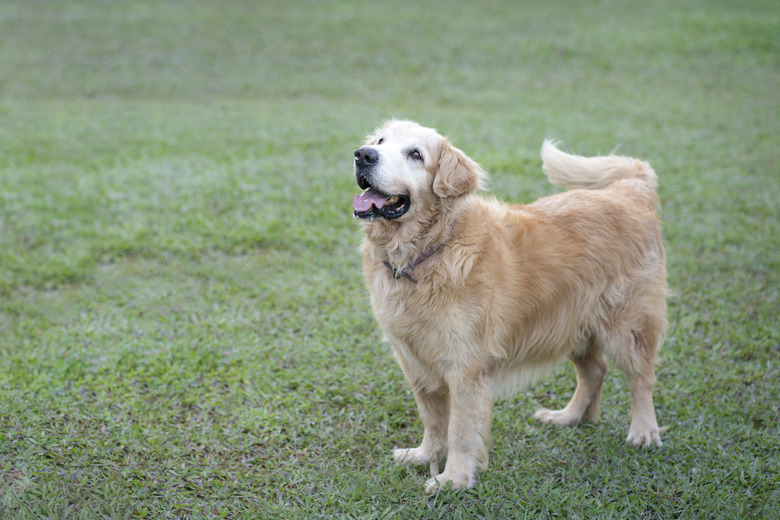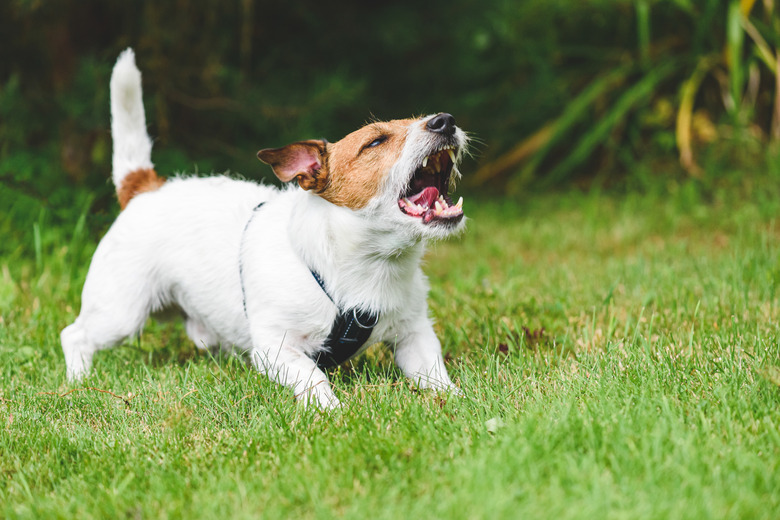What Is Your Dog's Tail Telling You?
As a certified dog behavior consultant, I hear variations on the phrase "his tail was wagging, so he must have been happy" all the time. There's no doubt that a dog's tail can communicate their emotional state, but there's much more to it than simply "wagging means positive feelings."
Being able to accurately read your dog's body language is an important skill for any pet parent, and as more research is conducted every year on canine cognition, there's always more to learn! Let's dive into what your dog's tail specifically is trying to tell you.
What does “neutral” look like for your dog?
What does "neutral" look like for your dog?
One of the trickiest parts about reading body language, particularly when it comes to tails, is how much variety we see in their structure across breeds. Some dogs, like Labrador retrievers, have large paddle-shaped tails that generally sit in line with the spine. It's relatively easy to see when it's raised up high, when it's tucked under their bodies, and any movement that comes along for the ride. If you feel confident reading your lab's tail, you still might find it tricky to then understand the nuance of a pug's naturally curled tail that sits high up on its back, or the low hooked tail of a greyhound. Even natural bobtail breeds will show some variation in "tail" movements.
Spend some time observing your specific dog. What does their tail do when you get home from work and they're excited to see you? How does that change if they're feeling overwhelmed or stressed? Behavior is a study of one, and it's important to first and foremost know your animal's specific quirks well!
What a dog's tail carriage can tell us
What a dog's tail carriage can tell us
If a dog's tail is aligned with the spine, or sitting in its neutral carriage depending on the breed, then they are most likely feeling content or relaxed. The higher that tail position is held, generally the more arousal there likely is at play for the dog. This can run the gamut from excitement to aggression, so it's important to look at all of the other factors! A tail that is raised high and held stiff or wagging with quick, choppy movement is a red flag; this dog is communicating that they need space and may escalate to aggressive displays or behavior.
On the other hand, a tail that is held high and is wagging in loose, broad, or floppy movements is much more likely a dog who is interested in interacting or even playing.
Tails that are held low or that tuck completely under the dog's body usually means they are feeling apprehensive or anxious. In some scenarios, you may notice the tip of a tucked tail wagging quickly in short movements. This is a common appeasement signal seen when a dog is attempting to reduce or resolve conflict.
Speed and movement
Speed and movement
There's a lot more to a tail's movement than just "still" or "wagging." The speed, type of movement, and even the direction of that movement all has meaning! Painting in broad strokes (reminder: behavior is a study of one!), the faster a tail is wagging, the more arousal there is for the dog. Just like with tail carriage, that can vary wildly from over-the-top excitement to hostility.
Fast, short wags, especially when paired with high tail carriage, can be thought of like the tip of a rattlesnake's tail: a warning. On the other hand, a fast wagging tail with broad sweeping movement side to side or circular motion like a windmill usually means that the dog is extremely excited about something or someone. A tail that is being held perfectly still is typically a dog who is concerned, or in the case of breeds like pointers, a dog who has found something very interesting.
There have even been studies that show the direction of wagging can tell us how a dog feels about something. According to researchers, dogs' tails tend to wag to the right when they are approaching something they are interested in (like their pet parents), and they wag to the left when approaching something they feel conflicted or concerned about.
Injured tails
Injured tails
Did you know that dogs can accidentally injure their tails from too much wagging? Sprains and a condition affectionately referred to as happy tail syndrome by veterinarians are not uncommon, especially for enthusiastic breeds like labradors and bully breeds. If you ever see your dog's tail hanging limp or covered in small cuts and scabs, it's time for a vet visit!
Look at the whole picture
Look at the whole picture
As much as your dog's tail can tell you, it's always important to look at the whole picture and to have a clear overall understanding of body language. If you are new to reading canine body language, you can even download the free Doggie Decoder app for accurate and easy to follow guides to speaking your best friend's language.


